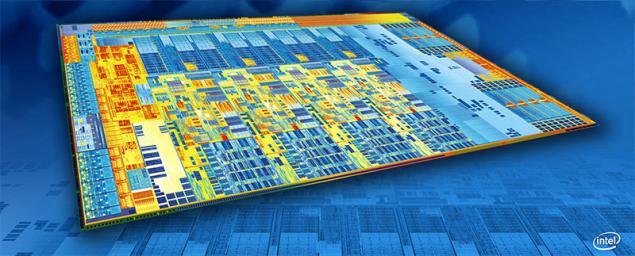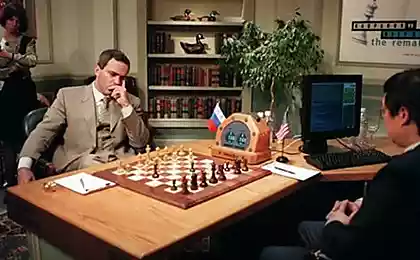1660
Pocket desktop
We continue to promote our mini "desktop", fully developed by Russian engineers and collected through its production facilities. We - this is the Moscow company « Networking Technologies » and its Taiwanese subsidiary of « Communication Technology ».

What we have developed? At the moment, this is a serious line of mini-computers for use at home and in the office. Advantages of these products are obvious. Most PC users now do not need powerful gaming machines, and at the same time, office, browser and other applications need to "fly". Head of the company is very important economic aspect - for example, charges for electricity, recycling. IT people is important to keep the whole fleet, and it is desirable that the iron was the same, then fallen to roll axis easier, and replace the broken "baby" -Computer easily enough. And these enormous dust collectors buzzing under tables horrified and users and team technicians that serve them. It is much more aesthetic looks clean table and a minimum of wiring, and the computer in general can be hidden behind the monitor and stay on VESA-mount.
You say, what's there may be stuff in this size? A drive? A memory? I note that SSD drives are now rapidly getting cheaper, and we use the SSD-module form factor mSATA. For example, Samsung has long been doing 1Tb This amount . Yes, you heard right, 1Tb. A line of 8Gb memory volume today is enough for most tasks.
A little about the production
Production, as mentioned above, organized on their own. The whole cycle of high-tech production started in Russia. We have our new SMD-line as in Taiwan, and Russia. Pilot production debugged to the smallest detail. Purchase of components produced by our Taiwanese company.
SMD-line in Russia:

SMD-line in Taiwan:

Ruler

The entire range of mini-computers, our company will show at the upcoming Computex show in June 2015, which once again will be held in Taipei. Наш Stand M1220 is two steps away from the stand from Intel, the exhibition hall Nangan.

So product line. Under the brand name «Raydget» currently produces the following mini-computers (Each model built in gigabit network card Realtek 8111F and dual jack headphones / microphone audio codec Realtek ALC269Q):

What we have developed? At the moment, this is a serious line of mini-computers for use at home and in the office. Advantages of these products are obvious. Most PC users now do not need powerful gaming machines, and at the same time, office, browser and other applications need to "fly". Head of the company is very important economic aspect - for example, charges for electricity, recycling. IT people is important to keep the whole fleet, and it is desirable that the iron was the same, then fallen to roll axis easier, and replace the broken "baby" -Computer easily enough. And these enormous dust collectors buzzing under tables horrified and users and team technicians that serve them. It is much more aesthetic looks clean table and a minimum of wiring, and the computer in general can be hidden behind the monitor and stay on VESA-mount.
You say, what's there may be stuff in this size? A drive? A memory? I note that SSD drives are now rapidly getting cheaper, and we use the SSD-module form factor mSATA. For example, Samsung has long been doing 1Tb This amount . Yes, you heard right, 1Tb. A line of 8Gb memory volume today is enough for most tasks.
A little about the production
Production, as mentioned above, organized on their own. The whole cycle of high-tech production started in Russia. We have our new SMD-line as in Taiwan, and Russia. Pilot production debugged to the smallest detail. Purchase of components produced by our Taiwanese company.
SMD-line in Russia:

SMD-line in Taiwan:

Ruler

The entire range of mini-computers, our company will show at the upcoming Computex show in June 2015, which once again will be held in Taipei. Наш Stand M1220 is two steps away from the stand from Intel, the exhibition hall Nangan.

So product line. Under the brand name «Raydget» currently produces the following mini-computers (Each model built in gigabit network card Realtek 8111F and dual jack headphones / microphone audio codec Realtek ALC269Q):
| CPU th> | Video th> | Memory th> | Drive th> | Wireless Interface th> | USB th> | Power th> | |||||||||||||||||||||||||||||||||||||||||||||||||||||
|---|---|---|---|---|---|---|---|---|---|---|---|---|---|---|---|---|---|---|---|---|---|---|---|---|---|---|---|---|---|---|---|---|---|---|---|---|---|---|---|---|---|---|---|---|---|---|---|---|---|---|---|---|---|---|---|---|---|---|---|
| SlimBox II 2012 145x77x16 ~ 200g th> | Intel Atom N2800 (6, 5W) Intel NM10 Chipset (1, 5W) | HDMI-C Intel GMA3650 | 1x SO-DIMM DDR3-1066 | mSATA-II | Half Mini PCIe | 2x USB2.0 | 19V 25W | ||||||||||||||||||||||||||||||||||||||||||||||||||||
| SlimBox III 2013 151x77x20 ~ 200g th> | 3rd gen Intel Core-U (17W) 3rd gen Intel Core-Y (13W) Intel Celeron-U 1000 (17W) Intel Celeron-Y 1000 (10W) Intel Pentium-U 2000 (17W) Intel Pentium-Y 2000 (10W) Intel QM77 Express Chipset (4, 1W) | HDMI-A Intel HD 3000 Intel HD 4000 | 1x SO-DIMM DDR3-1600 | Half mSATA-III | Half Mini PCIe | 2x USB3.0 | 12V 40W | ||||||||||||||||||||||||||||||||||||||||||||||||||||
| SlimBox IV 2014 145x77x16 ~ 200g th> | 4th gen Intel Core-U (15W) 4th gen Intel Core-Y (11, 5W) Intel Celeron-U 2000 (15W) Intel Pentium-U 3500 (15W) Intel Pentium-Y 3000 (11, 5W) Intel PCH-LP Chipset | HDMI-C Intel HD 4200 Intel HD 4400 Intel HD 5000 | 1x SO-DIMM DDR3L-1600 | mSATA-III | Half Mini PCIe | 2x USB3.0 | 12V 40W | ||||||||||||||||||||||||||||||||||||||||||||||||||||
| CoolBox IV 2014 148x83x40 ~ 600g th> | 4th gen Intel Core-U (15W) 4th gen Intel Core-Y (11, 5W) Intel Celeron-U 2000 (15W) Intel Pentium-U 3500 (15W) Intel Pentium-Y 3000 (11, 5W) Intel PCH-LP Chipset | HDMI-A Intel HD 4200 Intel HD 4400 Intel HD 5000 | 2x SO-DIMM DDR3L-1600 | 2, 5 "SATA-III | Mini PCIe | 2x USB3.0 1x USB2.0 | 12V 40W Without fan | ||||||||||||||||||||||||||||||||||||||||||||||||||||
| PowerBox IV 2015 152x81x21 ~ 200g th> | 4th gen Intel Core-U (15-28W) 4th gen Intel Core-Y (11, 5W) Intel Celeron-U 2000 (15W) Intel Pentium-U 3500 (15W) Intel Pentium-Y 3000 (11, 5W) Intel PCH-LP Chipset | 2x HDMI-C Intel HD 4200 Intel HD 4400 Intel HD 5000 Intel Iris 5100 | 1x SO-DIMM DDR3L-1600 | mSATA-III | M.2 NGFF | 4x USB3.0 | 12V 40-60W | ||||||||||||||||||||||||||||||||||||||||||||||||||||
| SlimBox V 2015 145x77x16 ~ 200g th> | 5th gen Intel Core-U (15W) Intel Celeron-U 3000 (15W) Intel Pentium-U 3800 (15W) Intel PCH-LP Chipset | HDMI-C Intel HD 5500 Intel HD 6000 | 1x SO-DIMM DDR3L-1600 | mSATA-III | Half Mini PCIe | 2x USB3.0 | 12V 40W | ||||||||||||||||||||||||||||||||||||||||||||||||||||
| PowerBox V 2015 152x81x21 ~ 200g th> | 5th gen Intel Core-U (15-28W) Intel Celeron-U 3000 (15W) Intel Pentium-U 3800 (15W) Intel PCH-LP Chipset | 2x HDMI-C Intel HD 5500 Intel HD 6000 Intel Iris 6100 | 1x SO-DIMM DDR3L-1600 | mSATA-III | M.2 NGFF | 4x USB3.0 | 12V 40-60W Raydget PowerBox V  Let's start with the older model. At the moment it Raydget PowerBox V, and its production is being prepared for launch. Samples of work and show very good results. So this machine is based on the platform Intel Broadwell-U. The maximum supported processor currently is the Intel Core i7-5557U 3, 4 GHz with integrated graphics Intel Iris 6100 chipset and the Intel PCH-LP Chipset. TDP of this processor is 28 Watts. Graphics copes with the average performance of its games and slightly higher than the nVidia GeForce 830M and AMD Radeon R9 M275. The computer has two video outputs Mini-HDMI, which is very convenient lovers dual-monitor configurations. 4 USB3.0 ports are not allowed to use external USB-hubs at least two ports will be free.
|


























